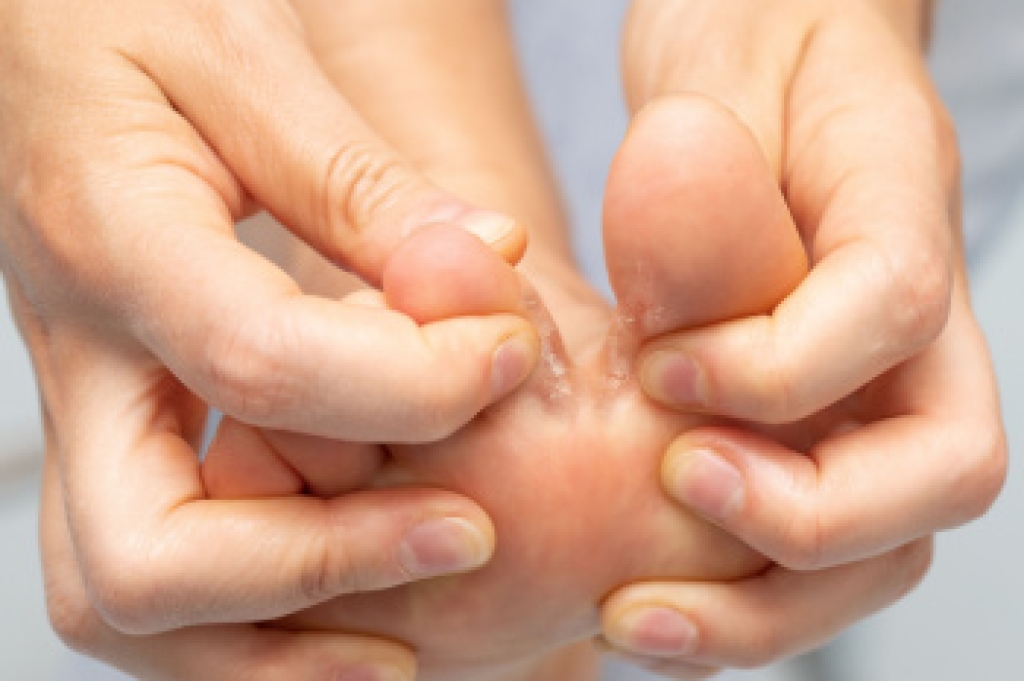
Recognizing an athlete’s foot infection starts with noticing changes in the skin on the feet, especially between the toes and along the soles. Early signs include itching, burning, or stinging, followed by peeling, cracking, or scaling skin that can become red and irritated. Some people notice small blisters or areas of raw skin, while others develop dry, thickened patches along the sides or bottom of the foot. In some cases, the infection spreads to the toenails, leading to discoloration, thickening, or crumbling. Athlete’s foot develops from fungus that thrives in warm, moist environments, like sweaty shoes or walking barefoot in shared areas. A podiatrist can examine the feet, confirm whether a fungal infection is present, and recommend appropriate treatment to reduce symptoms and prevent long-term skin or nail problems. If you think you have an athlete's foot infection, it is suggested that you make an appointment with a podiatrist for a diagnosis and options for help.
Athlete’s Foot
Athlete’s foot is often an uncomfortable condition to experience. Thankfully, podiatrists specialize in treating athlete’s foot and offer the best treatment options. If you have any questions about athlete’s foot, consult with Leonard Talarico, DPM from Georgia. Our doctor will assess your condition and provide you with quality treatment.
What Is Athlete’s Foot?
Tinea pedis, more commonly known as athlete’s foot, is a non-serious and common fungal infection of the foot. Athlete’s foot is contagious and can be contracted by touching someone who has it or infected surfaces. The most common places contaminated by it are public showers, locker rooms, and swimming pools. Once contracted, it grows on feet that are left inside moist, dark, and warm shoes and socks.
Prevention
The most effective ways to prevent athlete’s foot include:
- Thoroughly washing and drying feet
- Avoid going barefoot in locker rooms and public showers
- Using shower shoes in public showers
- Wearing socks that allow the feet to breathe
- Changing socks and shoes frequently if you sweat a lot
Symptoms
Athlete’s foot initially occurs as a rash between the toes. However, if left undiagnosed, it can spread to the sides and bottom of the feet, toenails, and if touched by hand, the hands themselves. Symptoms include:
- Redness
- Burning
- Itching
- Scaly and peeling skin
Diagnosis and Treatment
Diagnosis is quick and easy. Skin samples will be taken and either viewed under a microscope or sent to a lab for testing. Sometimes, a podiatrist can diagnose it based on simply looking at it. Once confirmed, treatment options include oral and topical antifungal medications.
If you have any questions, please feel free to contact our office located in Pooler, GA . We offer the newest diagnostic and treatment technologies for all your foot care needs.



